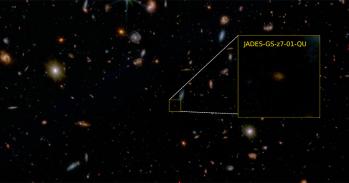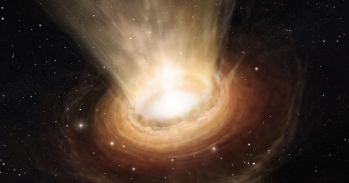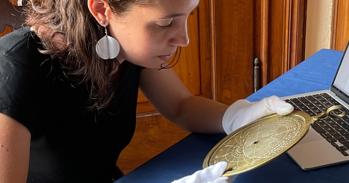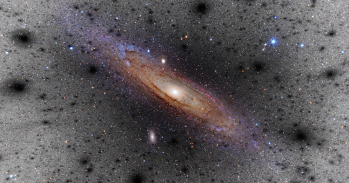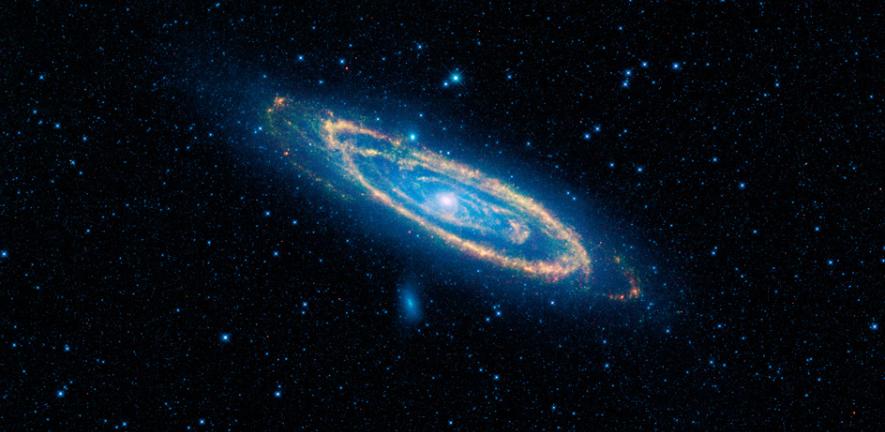
An international team of astronomers have identified a thick stellar disc in the Andromeda galaxy, which will help them to understand more about how our own Milky Way and other galaxies evolved.
An international team of astronomers have identified a thick stellar disc in the Andromeda galaxy, which will help them to understand more about how our own Milky Way and other galaxies evolved.
The classical thin stellar discs that we typically see in Hubble imaging result from the accretion of gas towards the end of a galaxy's formation.
Michelle Collins
The University of Cambridge-led study involved researchers from the UK, US and Europe, and marks the first time that the "thick disc" in Andromeda, which contains old stars, has been identified.
The observation will allow astronomers to analyse an area that formed relatively early in Andromeda's evolution, enabling them to look more closely at how galaxies are assembled. This cannot be easily done in our own galaxy, because the equivalent part of the Milky Way is obscured.
Most large galaxies, including the Milky Way, are defined by a spiral structure, in which roughly 70% of all the stars are contained within an area that looks like a huge, flat, stellar disc. This structure contains the spiral arms created by regions where star formation is taking place, surrounding a central bulge of old stars at the core of the galaxy.
Studies of the Milky Way and other nearby spiral galaxies have shown that these galaxies actually contain two stellar discs - one of which is thicker than the other. The thick disc consists of older stars, whose orbits take them along a path that extends both above and below the more regular thin disc.
"The classical thin stellar discs that we typically see in Hubble imaging result from the accretion of gas towards the end of a galaxy's formation," Michelle Collins, a PhD student at the University of Cambridge's Institute of Astronomy, who led the research, said.
"Thick discs, however, are produced in a much earlier phase of the galaxy's life, making them ideal tracers of the processes involved in galactic evolution."
Currently, the formation of this thick disc is not well understood. The best hope for understanding the structure was by studying the thick-disc of our own galaxy, but much of it is obscured from view.
The team behind the new research analysed precise measurements of the velocities of individual bright stars within the Andromeda galaxy, our nearest neighbouring spiral galaxy, using the Keck telescope in Hawaii. Gradually, they were able to distinguish those stars in the thick disc from those in the thinner disc, and as a result could analyse how one group differed from the other in height, width and chemistry.
They will now be able to use this information to determine the properties of the disc across the full extent of the galaxy and look for signatures of the events connected to its formation. A huge amount of energy is needed to stir up a galaxy's stars to form a thick disc component and theoretical models proposed include the accretion of smaller, satellite galaxies, or more subtle and continuous heating of stars within the galaxy by spiral arms.
Mike Rich, from the University of California, Los Angeles, who also worked on the project, said: "Our initial study of this component already suggests that it is likely older than the thin disc, with a different chemical composition."
"Future, more detailed observations should enable us to unravel the formation of the disc system in Andromeda, with the potential to apply this understanding to the formation of spiral galaxies throughout the Universe."
Dr. Scott Chapman, from the University of Cambridge's Institute of Astronomy, said: "This result is one of the most exciting to emerge from the larger parent survey of the motions and chemistry of stars in the outskirts of Andromeda. Finding this thick disc has afforded us a unique and spectacular view of the formation of the system and will undoubtedly assist in our understanding of this complex process."
The study is published in the Monthly Notices of the Royal Astronomical Society.
This work is licensed under a Creative Commons Licence. If you use this content on your site please link back to this page.


